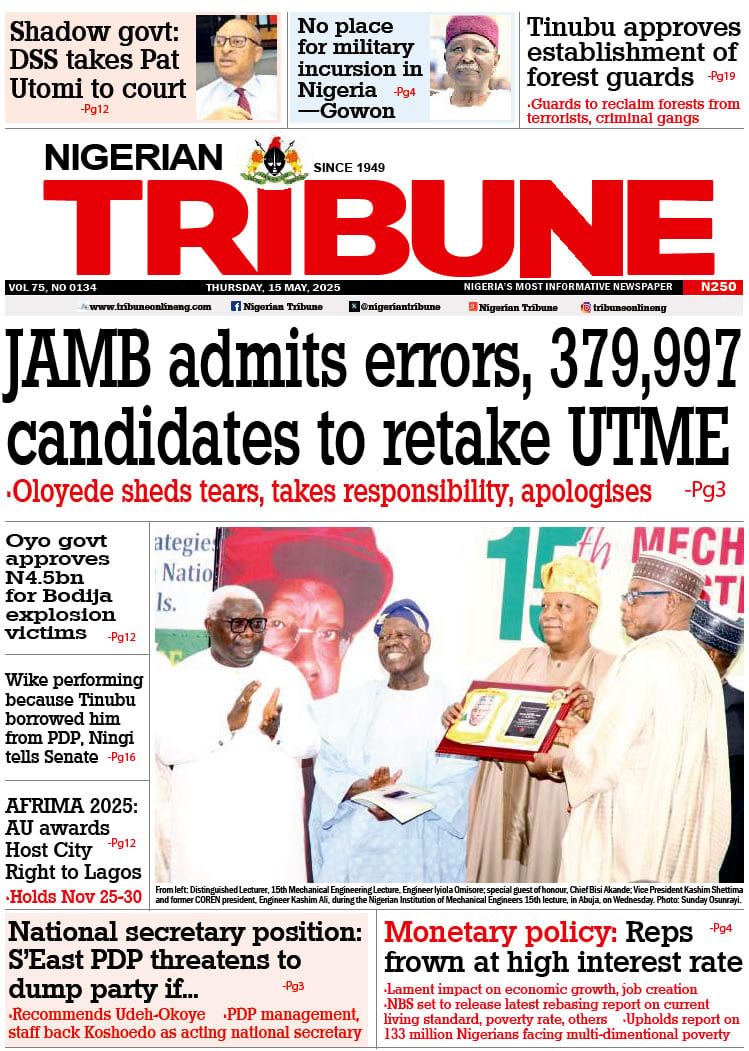I write to provide a professional feedback to one of the articles of one of your regular contributors to this column, whose work I have followed tenaciously for a while now.
I am Ezekiel Solesi, an executive business coach, a member of the Forbes Coaching Council and a serial entrepreneur. I’ve a strong penchant for knowledge-sharing, where insights and experiences are amplified within the Nigerian coaching landscape, particularly to advance its course.
Personally, I have observed that there’s a lack of scholarly input about business coaching in Nigeria; this lack is the reason behind my commitment to share knowledge and spark impactful conversations that can propel both coaches and clients into a peak of excellence.
It’s with this commitment for learning, sharing and improving the industry that Oladipupo Clement’s article on “Chronicling Strategies for Business Coaching Client Acquisition and Sourcing,” got me endeared and aroused to provide a feedback and an analysis.
This piece isn’t a mere work of art; it’s an invaluable contribution to the coaching field in Nigeria, to encourage the exchange of scholarly ideas and dialogue for better projections of impactful concerns.
The article plunges into the client acquisition strategies needed as a coach in Nigeria’s coaching landscape, and I’ll say Mr Clement established facts in this regard with solid narratives. He highlighted the role of business coaching and likened it to a personalized form of service where clients whose needs are scattered around different sectors are assisted to have them achieved.
The introductory section of the article did justice to laying the foundation of the article’s central theme; it’s well-crafted and aligned, with its purpose positively syncing with the context of coaching being a relevant career.
The tone of the article is quite professional, but in the second paragraph it shifts to giving laudable efforts due credit, where focus was on the unique dynamics of Nigeria’s coaching landscape, revealing the competitive pace of Nigeria’s coaching market, which is true considering how lucrative the niche has become, especially in the wake of growing industries.
I love that through this exploration, Clement captured the vibrancy of the coaching landscape in view of entrepreneurial realities and the unrelenting desire of youths to own businesses and thrive in the market.
The fourth paragraph gave elaborate explanations on challenges facing the business sphere in Nigeria. They include inflation, unstable exchange rates, inadequate infrastructure, and inconsistency with government policies and regulations. Adding this context is clever, and it opens up the thought of the strategies business coaches could adopt amidst the challenges in order to stay relevant.
An example could be business coaches tweaking their pricing models so clients can be able to afford their services. Highlighting corporate branding as a major strategy is brilliant, especially as a lot of coaches are still struggling to gain online presence and reputation.
In a competitive market crowded with so many professionals, having a distinct brand is a necessity. Clement’s argument in this section appears weighty as he provides reasons why defining and owning a corporate brand acts as a major catalyst for acquiring prospective clients.
He further embellished his arguments, referencing Seth Godin’s branding perspective, emphasizing that personal branding is an asset to earn an outstanding stance among competitors. I’d have loved if this was further enhanced by including tips coaches could adopt to have their brands recognised and associated with.
Clement deepened the lead on branding, where he buttressed the significance of the intersection between digital branding and personal branding, citing that it’s a productive strategy that has proven to be successful in different scenarios.
Digital branding follows marketing cues like social media marketing, content creation, digital/sponsored ads, and a lot more to build awareness, followership, and credibility. This argument was backed by Statista’s report on internet usage in Nigeria, which proves why digital branding is prone to yield results.
Paragraph nine held in bold terms the significance of relationship-building, projecting it as a strong strategy for coaches to uphold. Building relationships with colleagues and clients often leads to referrals.
The more you get referred to, the higher your chances of getting popularly recognised by a large pool of clientele. This section is rich and actually offered comprehensive insights, especially the inclusion of Keith Ferrazzi’s perspective on networking
Clement introduced corporate social responsibility (CSR) as another innovative strategy for client acquisition. It’s smart, and I applaud that. CSR is usually expected from big brands unknown to small and medium-sized brands that it yields almost the same results.
It just needs to be tailored according to capacity. CSR refers to offering services or promoting a course that benefits the entire social and communal space. The article suggests that coaches could offer free consultation services, sponsor significant events, or support good forms of advocacy.
This results in positive brand positioning, endearing prospective clients that could in turn stay loyal because of an impact CSR course of action. Nigerians value social contributions and anything that eases the pain of the middle and lower class, which proves why CSR stays as a promising strategy for client acquisition.
The concluding paragraph of the article gave a summary of industry trends and reasons why professional ethics must be respected. This very apt, and if I were to add any other thing, it will examples such as the ethical dilemma situations and how tech startups can navigate within ethical scopes without breaching. Provision of these dimensions would have fostered better understanding of the need to evolve and innovate.
The article is a brilliant contribution to the coaching sphere, and I love how it gave a colourful flair to the strategies coaches can adopt for client acquisition in Nigeria’s saturated market.
The insights were bolstered by relevant references from related authors, making the article focus on its core message. It’s well researched and detailed—capturing essential themes like branding, networking, and CSR, which are relevant in Nigeria’s coaching sector. I think every business will find this article quite useful, particularly in sourcing for client and client retention






